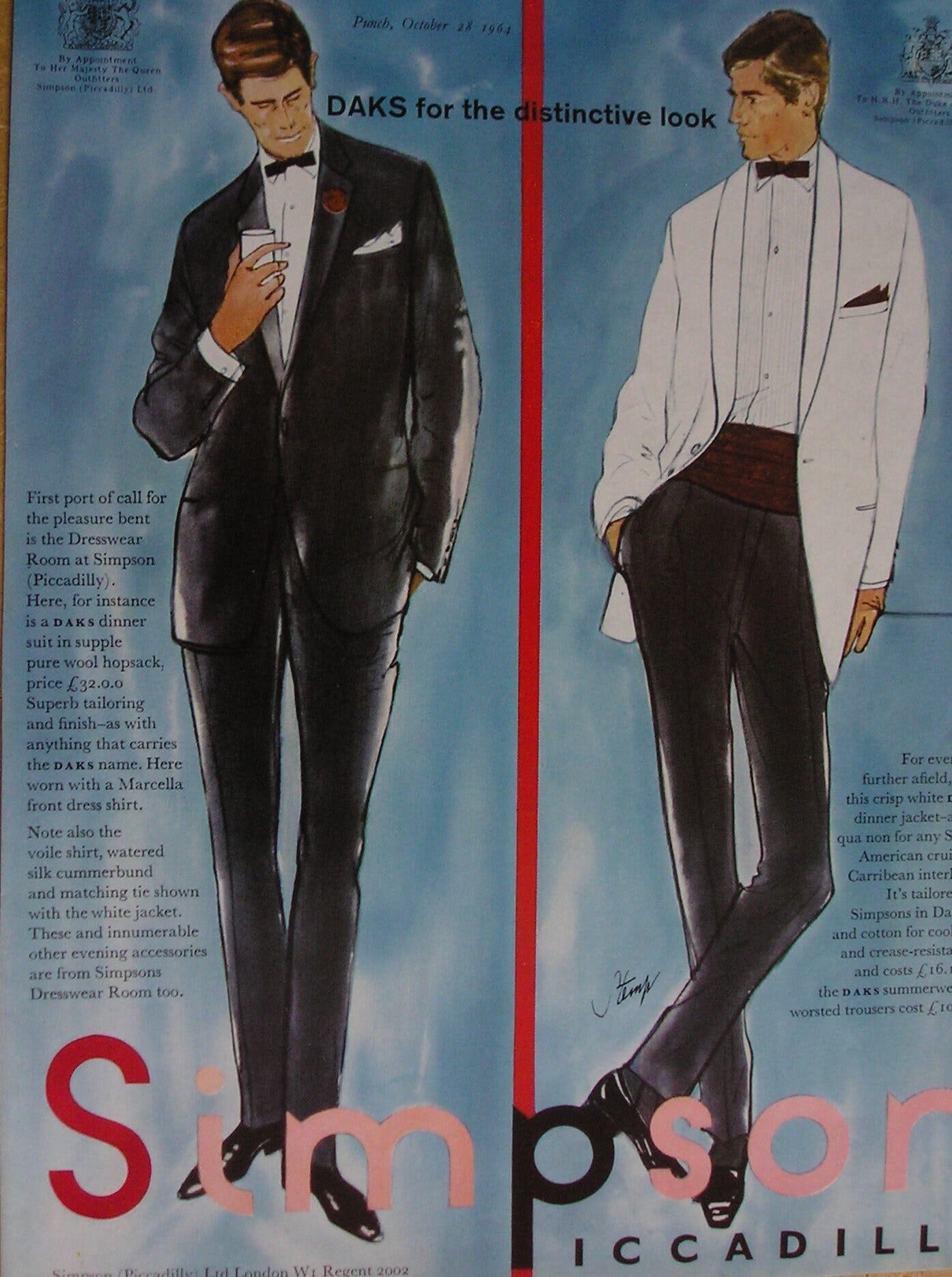Port Medway, Nova Scotia, July 30, 2023
We are all slobs now
Does it matter anymore what clothes we wear?
Once it did matter. Once clothes sent a message, about how you felt, or how important you were, or about the significance of an occasion. The message might be sober (workplace), solemn (funeral), joyful (party), sexy (date), regal (King), etc. Clothes communicated. But, with few exceptions, clothes are no longer used this way. Clothes, as we once understood and deployed them, are pretty much passé. We are all slobs now.
One of my first jobs was teaching at the McGill law school. That was not long after Maxwell Cohen’s term as dean of law (1964-69). Cohen, now largely forgotten, was a force to be reckoned with. When he was dean, most McGill law students were male, and Cohen strongly encouraged them to wear ties and jackets. After all, Cohen reasoned, they were lawyers in the making, nascent professionals, future officers of the court. They should look the part, serious and smart. And if they looked the part, they’d think the part.
They tell me that it’s different now at the McGill law school.
Later I practised law at a big Toronto firm. When I started, everyone in the office dressed conservatively and traditionally. (Once I was chided for wearing a bow tie. This was regarded as too flamboyant.) Then, in about 1995, “Casual Friday” was introduced. On Casual Friday, men didn’t need to wear a tie of any kind and women were allowed an equivalent informality. Initially, jeans were not acceptable, but this soon changed.
Once this trend towards the casual had begun, in workplaces of all types, casualness all the time, it was unstoppable. Today you cannot tell lawyers from clients, or bankers from customers. If you can, it’s because sometimes clients and customers, wanting to make a good impression, feeling intimidated by the prospect of dealing with an expensive professional, dress up for the meeting and end up looking better than the lawyers and bankers they are going to see.
When I retired from the practice of law in 2000, I gave my collection of drab and costly suits to a charity which passed on clothes like these to men looking for work who needed to look smart in a job interview. (I suppose the suit was thrown away once a job was secured.) I kept one suit for myself, reasoning that I’d need it to attend the funerals that were inevitably coming. But I misread the situation. The end of clothes was nigh. There have been a lot of funerals since I retired, but I haven’t had to drag my funeral suit out very often. Smart casual, or less, is acceptable even in death. I’ve been to funerals where some mourners wore shorts and t-shirts.
But not everywhere is like this. Mercifully, standards remain in one or two places. Or so they say.
Almost 60 years ago, impecunious and threadbare, I left Winnipeg to study at Oxford University. When I first arrived in England, an uncle of mine who lived in London, in an act of kindness and generosity I have not forgotten, said “You’ll need some decent clothes at that place, including a dinner jacket. I’ll take you to Simpsons of Piccadilly and we’ll get what you need.” (“Dinner jacket” is English-speak for “tuxedo.”) “After all,” my uncle added, “you’re off to Oxford and you’ve got to do it right.”
It’s more than 50 years since I left that university, but I’m told that its sartorial demands have not changed a whole lot. Can that be true? I’d like to find out, but I don’t think I have the right clothes for a trip like that.




I love to dress for the occasion. A few years ago we planned a trip to Paris which included an evening at the opera. We packed special “ opera worthy” outfits for the event. When we arrived at the Palais Garnier we were quite surprised to see the majority of the audience wearing jeans and sneakers!? At the Paris Opera House! We felt over dressed by audience standards, but not for the building or the production. That jewel box demands that one dresses for the occasion. If I ever go again I will wear a tiara.
I applaud a lot of these changes. I was a kid in the 60s, garter belts, girdles, crinolines, all sorts of hideous crap for women. We started getting comfortable in the 70s & early 80s, but then the professional uniform changed to far-too high heels & pencil skirts in the ‘90s/00s. Gah.
The last couple of times I saw my accountant, she had on smart casual; she looked competent but comfortable. Hurrah!
Business dress codes have always been far more challenging for women than for men.
Not everyone has gone the casual route, though. My son is 31, works in a Halifax consultancy. He still wears a shirt & tie most days, keeps a couple of changes of suits/blazers at the office (he bikes to work), likes the tailored shirt, sleeves rolled to below the elbows, silk tie combo. He is one of those infuriating men who has inborn panache and looks great in anything - but it gives him instant credibility when dealing with clients twice his age.
My daughter, 29, works in the non-profit sector, so she’s very casual at work - but when she’s meeting with funders/govt she dresses counter to their expectations - tailored pants & blazer/silk shirt.
I’ve spent a week or two at Milford House every summer for 25 years now. I remember when everyone dressed nicely for dinner; now, it’s a free-for-all. But my friends and I hold out for sun dresses and a pretty shawl, or tailored linen pants.
So a few of us still try, either because we like it, or because we’re aware of the subtle messages we send with how we dress, and use those deliberately.